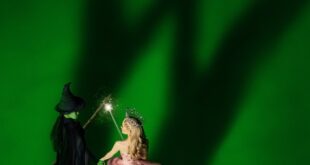If, like me, your introduction to the artist Paul Gauguin was the 1919 novel based on his life by W. Somerset Maugham, The Moon and Sixpence, which focused on the morality of the artist’s mid life decision to change careers, abandon his wife and children and pursue his vision of art, you may find that the National Gallery of Art’s documentary, Gauguin: Maker of Myth fails to deal with the central question raised by the man’s life. It is not that the film fails to talk about the crucial act of the man’s life, it could hardly do that. It is simply that it never gets at the ethical issue. It is discussed as an aesthetic question. Gauguin in pursuit of an aesthetic ideal of purity walked away from what many if not most people would have considered his more fundamental obligations. Rather than dealing with the conflict between ethics and aesthetics, the film simply acknowledges the decision, explains its aesthetic basis and goes on to illustrate the results.
It is as though success justifies the act. That Gauguin, in fact, went on to produce universally acknowledged great works of art seems from the point of view of the filmmakers to justify his choice, and perhaps it does. Nevertheless, it does seem to be a decision that warrants greater scrutiny. What if it had turned out that he never produced anything of value? Would his choice then be justified? Indeed, even if it is true that he has produced great art, is that justification for his act? Do aesthetic values outweigh moral obligations? These are significant questions raised by Gauguin’s life, moreover they are interesting questions; unfortunately they are questions this film really never asks. It simply reports the fact and moves on from there.
Given that caveat, the half hour documentary does an excellent job exploring Gauguin’s aesthetics. It points to his desire to go beyond naturalism, his passion for vibrant color, his enchantment with the primitive closeness to nature. It points out his debt to the tradition of the noble savage, and details his search for the essential truths obscured by civilization first to the coast of Brittany and finally to the island of Tahiti. It analyzes and explains the various artistic influences on his work. And everything is illustrated with wonderfully detailed reproductions of the artist’s work. Whether his many self portraits or his famous paintings of Tahitian natives, the film is filled with examples of the man’s greatness. While the documentary does give the basic information about Gauguin’s life, it really devotes its attention to his work. And since it could be argued that it is only because of the work that we are interested in him in the first place, this makes sense.
The DVD is narrated by Willem Dafoe. Alfred Molina does the voice of Gauguin in several readings from the artist. It is interesting that unlike many documentaries, there is no reliance on talking heads. Academics and art historians are conspicuous by their absence. It is not that the film lacks scholarly credibility; it is simply that the scholarship has been integrated into the narrative.
Bonus material is limited. There is a short film about folk traditions in modern Brittany which includes some of the painter’s work for comparison. There are some young women in 19th century costume and a bagpiper, but the film itself lasts only a few minutes and really adds little to the understanding of either the painter or the locale. There is also a gallery of the artist’s work, which provides a nice overview of the art.
 Blogcritics The critical lens on today's culture & entertainment
Blogcritics The critical lens on today's culture & entertainment



